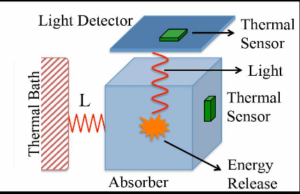PageContent
CUPID
(Cuore Upgrade with Particle IDentification)
The CUPID project was born with the aim to build a bolometric experiment for the search of double-beta decay processes in which no neutrinos are created (0νββ), able to operate in the zero-background conditions, using the CUORE infrastructure (cryostat).
Neutrinoless double beta decay violates the rules of the Standard Model of Particle Physics. Specifically, if the electrons are emitted without neutrinos, this violates lepton number conservation. Any process that violates lepton number conservation (such as 0νββ decay) opens the door to theoretical physics models seeking to explain why there is more matter than antimatter in the universe.
The founding idea of this new project is to exploit the capabilities of light-scintillating bolometers: when cooled to few milli-Kelvin, a minimum amount of energy released inside the bolometer (eg by a decay) may give rise, besides a temperature increase, to the production of light. This light may be measured and the additional information is used to infer the nature of the particle interacting inside the crystal, a primary handle to reduce the radioactive background that covers the signal.

The CUPID collaboration has developed “ad-hoc” bolometers based on Molibdenum (100Mo). The experiment is still working on the development of the detector: we expect to improve the sensibility to 0νββ of about 100 times with respect to CUORE.
Activities in Bologna
In this development phase of the experiment, the Bologna group is involved in the optimization of solid state Germanium thermistors (NTD, Neutron Transmutation Doped).
People involved
- Virginia Boldrini – assegnista di ricerca CNR
- Fulvio Mancarella – ricercatore CNR
- Niccolò Moggi – assegnista di ricerca Università di Bologna
- Rita Rizzoli – ricercatore CNR
- Stefano Zucchelli – Professore Università di Bologna












